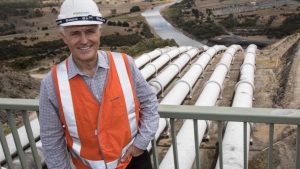The New Zealand government has announced a series of reforms to its emissions trading scheme, including protections for forestry projects impacted by natural disaster and the winding down of free allocations to heavy emitters, as it gears up to meet its pledge of net-zero emissions.
Under the reforms, the free allocation of emissions permits to industrial users will be gradually reduced over time. Initially, allocations will be reduced at 1 per cent per year from 2021-2030, then at 2 per cent from 2030-2041, and at 3 per cent per year from 2041-2050.
The reduction industrial allowances had been flagged by the New Zealand government for some time and is seen as a crucial way of beginning to put pressure on large emitters to begin reducing their own emissions.
“We are all in this together. Whether it’s supporting coastal communities to plan for sea level rise, making fuel efficient cars cheaper for families, or partnering with businesses and farmers to find the best ways to reduce their emissions and create sustainable jobs, our Government is working alongside New Zealanders to tackle the climate crisis,” climate change minister James Shaw said.
“Phasing down free allocation to major industrial emitters that have been part of the scheme for some time helps the ETS do what it’s supposed to do: drive emissions down across all sectors of the economy to help ensure a stable climate for future generations.
“The previous Government had indicated plans to do this from 2013 but put them on hold, leaving the industry waiting and unable to make important investment decisions.”
“We’ve consulted with stakeholders and are now providing them with the clarity and direction they’ve been asking for – a gradual and steady path of change with time for businesses and communities to adjust,” Shaw added.
The agricultural sector will be shielded from the changes, which currently receives free permits covering 95 per cent of the sector’s emissions, an allowance that will be maintained despite the stricter caps to be placed on industrial emitters.
The price of emissions permits in New Zealand has recovered substantially after reaching lows in 2013 and 2014, where the price fell to around NZ$2.70 per tonne. Spot prices are now trading at around NZ$24 per tonne.
Higher carbon permit prices, and a stronger commitment from the NZ government to reduce emissions will place challenges on an economy that is reliant on agriculture. However, it has also prompted action, including a commitment from major dairy producer Fonterra to accelerate the phase out of coal use in milk drying.
“Officials have shown that the phase-down does not pose a financial risk to ETS businesses as the ETS accounts for only a small part of a firm’s operating costs, and any additional cost to large polluting businesses will be manageable and will encourage businesses to invest in clean energy alternatives that reduce emissions,” Shaw said.
“But the government is aware our industries face international influences, which is why the independent Climate Change Commission will review phase-down rates and advise governments on appropriate allocations if technology, or the economics, or the global situation changes.”
“We are all in this together. Whether it’s supporting coastal communities to plan for sea level rise, making fuel efficient cars cheaper for families, or partnering with businesses and farmers to find the best ways to reduce their emissions and create sustainable jobs, our Government is working alongside New Zealanders to tackle the climate crisis,” Shaw added.
Additional reforms to the NZ ETS design will allow for “averaging” accounting and the awarding of carbon credits throughout the life of a forest project and provide greater protections to landowners undertaking forestry projects, who may face the financial ramifications of damage to forests as a result of storms or fire.
“Forestry participants will be able to ‘relocate’ a forest under averaging accounting – perhaps to a less productive land area – without having to surrender units for the deforested area and they won’t have to pay back units in the event of natural disasters, such as a forest fire or major storm, provided they replant in four years,” New Zealand forestry minister Shane Jones said.
“These are sensible changes, which make sure it’s easy for people to use their land how they want,” Mr Jones said.
The New Zealand Government is ramping up efforts to reduce emissions, following the tabling of legislation that will put the country’s goal of achieving zero net emissions into law.
The moves by the New Zealand Government to strengthen the design of its emissions trading scheme are in contrast to those of the Australian Government, which has sought measures to relax the stringency of emissions caps placed on large industrial emitters under the Safeguard Mechanism, and the recent flop of the latest Emissions Reduction Fund auction.







